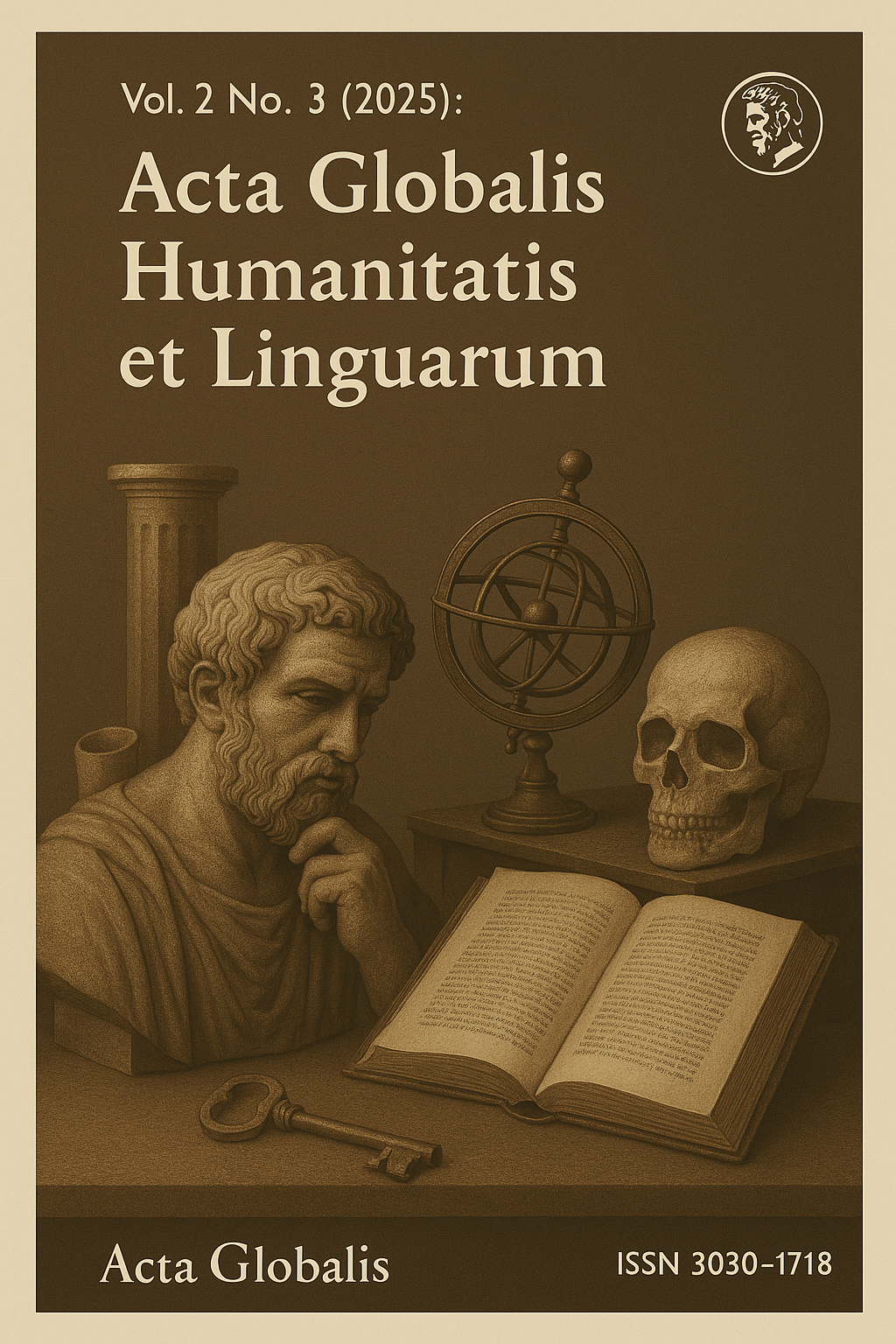Women's Complexity in Shakespearean Tragedy: A Case Study of Macbeth and Hamlet
DOI:
https://doi.org/10.69760/aghel.0250020004Keywords:
Shakespeare, tragedy, women, hamlet, macbeth, tragic liminality, gender roleAbstract
Behold the world of Shakespearean tragedies, with their complex characterizations, especially of women who, even as they walk through hell with a smile, can play both the savior and the villain. The feminist gaze into Shakespeare: the complexity of female characters in Macbeth and Hamlet with a focus on Lady Macbeth and Gertrude/Ophelia. This paper investigates through qualitative analysis of the texts, the depiction of women as the agents of power and subordinates to patriarchal systems in the works of Shakespeare. The paper focuses on the characters of them as double agency, the psychological depth and their influence on a tragic end of the national tragedy. This study, by addressing this lack of attention to how women are depicted in Shakespearean tragedies, provides a more nuanced understanding of the complex relations between gender and tragedy in early modern literature.
References
Adelman, J. (1987). Suffocating mothers: Fantasies of maternal origin in Shakespeare’s plays, Hamlet to The Tempest. Routledge.
Bamber, L. (1982). Comic women, tragic men: A study of gender and genre in Shakespeare. Stanford University Press.
Belsey, C. (1985). The subject of tragedy: Identity and difference in Renaissance drama. Methuen.
Black, S. (2022). Internalized submission: Ophelia and patriarchal power in Hamlet. Shakespeare Quarterly, 73(2), 145–162.
Bradley, A. C. (1904). Shakespearean tragedy: Lectures on Hamlet, Othello, King Lear, Macbeth. Macmillan.
Braun, V., & Clarke, V. (2006). Using thematic analysis in psychology. Qualitative Research in Psychology, 3(2), 77–101.
Brown, A. (2021). The madness of Lady Macbeth: Psychological complexity and patriarchal expectations. Journal of Shakespearean Studies, 45(3), 89–107.
Butler, J. (1990). Gender trouble: Feminism and the subversion of identity. Routledge.
Chamberlain, S. (2001). Fantasizing infanticide: Lady Macbeth and the murdering mother. Journal of Early Modern Studies, 10(3), 45–62.
Davis, L. (2024). Performing gender in Shakespeare’s theater: Boy actors and female roles. Oxford University Press.
Festinger, L. (2024). Cognitive dissonance: A modern perspective. Wiley.
Fletcher, K. (2023). Gender and monarchy in Shakespeare’s England: From Elizabeth I to James I. Cambridge University Press.
Freud, S. (1955). The interpretation of dreams (J. Strachey, Trans.). Basic Books. (Original work published 1900)
Green, S. (2022). Madness and gender in Shakespeare: Trauma and resistance in Hamlet and Macbeth. Palgrave Macmillan.
Heilbrun, C. (1957). The character of Hamlet’s mother. Shakespeare Quarterly, 8(2), 201–206.
Herman, J. (2022). Trauma and recovery: The aftermath of violence—from domestic abuse to political terror. Basic Books.
Hiscock, A. (2007). Reading memory in early modern literature. Cambridge University Press.
hooks, b. (2024). Feminism is for everybody: Revisited. Routledge.
Jones, M. (2019). Subversive women in Shakespeare’s tragedies: Resisting masculine constructs. Renaissance Drama, 47(1), 33–50.
Jung, C. G. (1968). The archetypes and the collective unconscious (R. F. C. Hull, Trans.). Princeton University Press.
Khan, R. (2025). Silenced voices: Gender and power in Shakespeare’s tragedies. Bloomsbury Academic.
Kumar, S. (2025). Shakespeare in the modern curriculum: Teaching gender and power. Routledge.
Lee, J. (2025). Digital Shakespeare: Textual analysis in the 21st century. MIT Press.
Levin, C. (1988). Women in Shakespeare’s tragedies: Victims of patriarchy. Early Modern Literary Studies, 2(1), 12–28.
McEachern, C. (2023). Cordelia’s silence: Defiance and sacrifice in King Lear. Shakespeare Survey, 76, 101–115.
Murphy, E., et al. (2020). Gender and genre in Shakespeare: Tragedy vs. comedy. Journal of Early Modern Literature, 18(4), 67–84.
Nguyen, T. (2025). Intersectionality in early modern literature: Class, gender, and power. Princeton University Press.
Patel, R. (2024). Toxic masculinity and Desdemona’s tragedy in Othello. Shakespeare Studies, 52(3), 123–139.
Rose, M. (1991). The expense of spirit: Love and sexuality in English Renaissance drama. Cornell University Press.
Shakespeare, W. (1603). Hamlet (A. Thompson & N. Taylor, Eds., 2016). Arden Shakespeare.
Shakespeare, W. (1606). Macbeth (K. Muir, Ed., 1984). Arden Shakespeare.
Showalter, E. (1985). Representing Ophelia: Women, madness, and the responsibilities of feminist criticism. In P. Parker & G. Hartman (Eds.), Shakespeare and the question of theory (pp. 77–94). Methuen.
Smith, E. (2018). Boy actors and the Shakespearean stage: Performance and gender in the early modern theater. Theatre History Studies, 38(1), 45–62.
Smith, J. (2020). Mirrors of the mind: Female characters and male struggles in Shakespeare. Literature and Psychology, 66(2), 98–114.
Taylor, P. (2024). Negotiating power: Women in Shakespeare’s tragedies. Yale University Press.
Thompson, A. (2023). Shakespeare on screen: Adapting gender and tragedy. Cambridge University Press.
Turner, V. (1969). The ritual process: Structure and anti-structure. Aldine Publishing.
White, A. (2021). Patriarchy and power in Shakespeare: Gertrude’s constrained agency. Yale University Press.
Wilson, M. (2025). Staging Shakespeare’s women: Performance and interpretation in the 21st century. Routledge.
Downloads
Published
Issue
Section
License
Copyright (c) 2025 Acta Globalis Humanitatis et Linguarum

This work is licensed under a Creative Commons Attribution-NonCommercial 4.0 International License.







